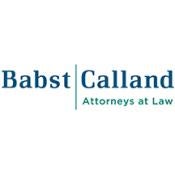As we previously reported, the COVID-19 pandemic has affected many employers and employees throughout Europe. Since mid-March 2020, the Government of the United Kingdom has implemented several measures and guidance to address the economic impact of the COVID-19 pandemic. Similar to other European jurisdictions, one such measure is the Coronavirus Job Retention Scheme (“CJRS”), designed to help employers retain their workforce. Currently, the CJRS provides partial subsidized wages to approximately 7.5 million UK employees across 935,000 employers. Recently, the UK has provided updates to the CJRS, including an extension of partial wage replacement grants and a shift toward allowing part-time work.
In late March 2020, Chancellor of the Exchequer Rishi Sunak announced the implementation of the CJRS. Under the CJRS, all UK employers with Pay As You Earn (“PAYE”) payroll schemes that were opened and in use on or before February 28, 2020 may apply for wage replacement grants to distribute to their furloughed employees. The CJRS recently has been extended to October 31, 2020.
Under the CJRS, employers may receive a grant to subsidize the wages of (i) furloughed employees and (ii) employees who previously were placed on unpaid leave after March 1, 2020. Note that employees who are on sick leave or who are self-isolating should not be paid through CJRS funds. Instead, these employees qualify for statutory sick leave pay until they are well or able to leave isolation.
From March 1, 2020 to July 31, 2020, the CJRS subsidizes up to 80% of employees’ “regular wage” or up to £2,500.00, whichever is lower, as well as all employer National Insurance Contributions (“NICs”) and pension contributions for the hours that employees are furloughed. Beginning on August 1, 2020, the level of CJRS grants will begin a tiered reduction for each month until October 31, 2020, as follows:
-
For August 2020, the UK Government still will pay 80% of wages up to a cap of £2,500.00, but employers will be responsible for the NICs and pension contributions for the hours that employees were furloughed.
-
In September 2020, the UK Government will pay 70% of wages up to a cap of £2,187.50 for the hours that employees are furloughed, and employers will pay NICs and pension contributions and will be required to make up the difference in employees’ wages. This ensures that employees receive at least 80% of their wages up to a cap of £2,500.00.
-
Finally, in October 2020, the CJRS grant will provide 60% of employees’ wages up to a cap of £1,875.00 for the hours that employees are furloughed, and employers will pay NICs and pension contributions and will be required to make up the difference in employees’ wages. Again, this ensures that employees receive at least 80% of their wages up to a cap of £2,500.00.
Initially, employers could distribute subsidies collected from the CJRS only to full-time and part-time employees who had been furloughed for at least three weeks. The original version of the CJRS program also required that furloughed employees receiving CJRS wages not engage in any revenue-generating activities or activities for their employers, except online training courses. Recent updates, however, provide that beginning July 1, 2020, employers may bring back furloughed employees to work for any amount of time (including part-time), while still being eligible for a grant to cover hours that employees have not worked. In all circumstances, employers are not required to have furloughed all employees. Employers may have furloughed some employees, paying them through CJRS funds, while other employees continue to work.
Important Considerations
Employers may choose to pay the difference between the 80% total (comprised of the CJRS grant and/or employer contributions required in September and October 2020) and the £2,500.00 cap. Employers also may want to pay the difference between the CJRS benefit and employees’ full salary. While eligibility for CJRS grants does not hinge upon employees’ remaining on full salary, any changes to the employment contract, including a reduction in wages, likely will require the consent of furloughed employees. Employers should consider that although some employees will agree to employment contract changes, to avoid, for example, redundancy, some employees may refuse to agree to such a negotiation. As such, employers should consider how to manage situations where employees refuse to agree to employment contract modifications. Note that employers must pay employees for any hours worked, as well as the NICs and pension contributions for those wages.
In all circumstances, to claim a CJRS grant, employers must notify affected employees in writing that they have been furloughed. Employers also must maintain records of this notice. Employers should be aware that a mere review of their employee roster to determine whether to furlough or to make redundant employees may qualify as a redundancy exercise, thereby triggering employers’ collective consultation duties. Under UK law, employers that fail to adhere to redundancy consultation rules risk an unfair redundancy claim adjudicated before an employment tribunal. Finally, when selecting employees for furlough, employers should be mindful of unfair dismissal and employment discrimination laws. To avoid the risk of such claims, employers should be able to point to a clear rationale for selecting employees for furlough.



 i
i


